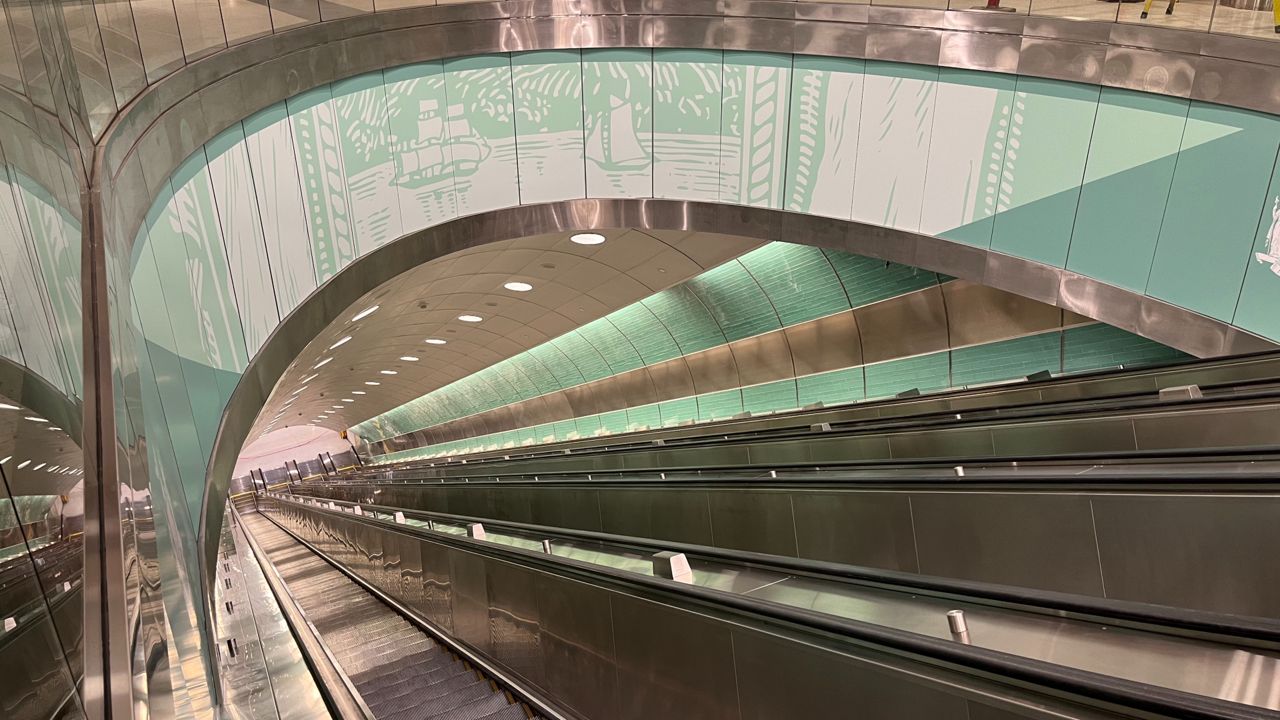The new east side station for Long Island Rail Road trains could open by the end of the year, according to MTA officials — as long as the agency finishes testing safety systems in the enormous new terminal.
Grand Central Madison will allow the estimated half of LIRR riders who work on Manhattan’s east side to avoid doubling back from Penn Station, the current terminus for the Long Island commuter rails.
Initially, however, the terminal, which sits below Grand Central Station, will run a limited shuttle service, with trains running between Grand Central Madison and Jamaica — with full LIRR service continuing to run from Penn. The MTA said it will provide three weeks of notice once the terminal is ready for full service “to enable travel planning.”
The agency is finishing up testing smoke ventilation systems in the terminal, Cathy Rinaldi, the interim president of the LIRR, said during a tour of the station Monday.
“The facility itself is largely done. You can see it, it's ready to go,” Rinaldi said. “We want to open as soon as we can safely do so.”

Grand Central Madison, an $11.1 billion project in the works for more than 22 years, has drawn scrutiny for delays and cost overruns. MTA Chairman Janno Lieber has repeatedly promised in recent months to open the terminal before the end of December.
During its soft launch, the station will run the limited shuttle service to Jamaica, with just one train per hour during the morning and afternoon rush periods, and two per hour during midday hours and on weekends.
The shuttle service, Rinaldi said, is meant to help orient travelers to the long station.
“The customers need to understand what this change means for them,” she said.
Rinaldi said the system can only run a single shuttle during peak hours because the other tracks will be filled with trains running from Penn Station.
After the soft launch period, the MTA will start full train service that mirrors the draft schedules it released in June.
Passengers will also be able to transfer directly between the LIRR and the Metro-North Railroad. When the station opens, the MTA will begin offering a “combo ticket” that includes rides on both commuter rails. The ticket will add a flat fare of $8 to any ticket that has Grand Central as the destination to allow a transfer to the other railroad system.
The station, which Lieber has compared to the size of the Chrysler Building laid on its side, was built 17 stories below street level, and features the longest — and steepest — escalator in the MTA system. At 180 feet long, it takes more than a minute and a half to carry riders to the mezzanine level.
Running underground from 44th Street to 48th Street, the station features a long ceramic mural by artist Yayoi Kusama, as well as digital displays that show depictions of different models of trains used by the LIRR through the years, as well as art by Long Island high schoolers.
Currently, none of the several dozen commercial spaces in the station are open, and ticketing machines along the walls are yet to be installed. The station’s many escalators to the mezzanine level, which sits sandwiched between two levels of train platforms, are tested and working, officials said.
The terminal can be accessed both within Grand Central Station and from soon-to-open entrances along Madison Avenue.
Grand Central Madison, part of the larger East Side Access project, should have a dramatic effect on the city’s transit system, Rinaldi said, ferrying people through the city without redundant trips across the island.
“Now you've got that connectivity, which I think creates a lot of opportunities for people who want to go to Yankee Stadium in the spring, people who want to go out to Forest Hills, visit relatives in Connecticut,” she said.





